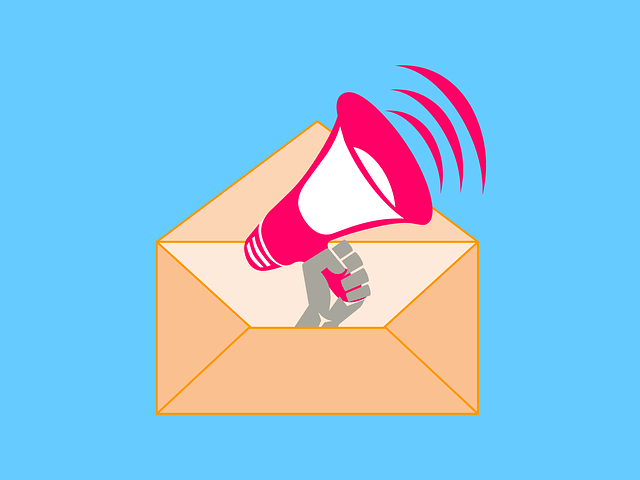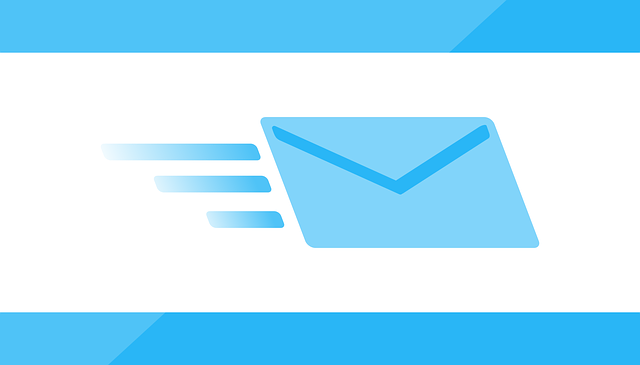Are you ready to take your B2B marketing strategy to the next level? In the ever-evolving world of digital marketing, two powerful techniques stand out: B2B email marketing and direct mail. They are like two warriors, each armed with their own unique strengths. But which one will emerge as the victor and yield better results for your business?
Picture this: B2B email marketing, a nimble and agile archer, shooting targeted messages straight into the inbox of your potential customers. On the other hand, direct mail, a mighty and formidable knight, delivering personalized and tangible messages right to the doorstep of your prospects.
In this article, we will delve into a comprehensive analysis of both B2B email marketing and direct mail. We will explore their impact on target audience, cost-effectiveness, reach, personalization, tracking, and integration. By examining the data, we will help you make an informed decision on which strategy to adopt for your business.
So, tighten your armor, grab your bow, and let’s discover which marketing technique will reign supreme in the battle of B2B email marketing versus direct mail.
Key Takeaways
- B2B email marketing allows for precise audience segmentation and has a lower cost per recipient compared to direct mail.
- Direct mail provides a tangible and personalized experience, leading to higher engagement and better brand recall.
- Measurement and integration of both strategies are crucial for measuring success and creating a cohesive brand experience.
- Integrating B2B email marketing and direct mail offers a powerful multi-channel strategy that drives engagement and conversion.
Target Audience Analysis
Are you curious about who your target audience is and how to effectively reach them through b2b email marketing or direct mail? To successfully engage your target audience, it’s crucial to understand their needs, preferences, and behaviors.
Target audience segmentation plays a vital role in determining the right approach. B2B email marketing allows for precise audience segmentation, enabling you to tailor your messages based on industry, company size, or job title. With email marketing strategies, you can leverage personalization, automation, and analytics to optimize your campaigns and increase engagement.
Direct mail, on the other hand, offers a tangible and personalized experience that can resonate with certain segments of your audience. Understanding your target audience and their preferences will help you choose the most effective strategy for reaching them.
Now, let’s dive into the cost analysis of these two marketing methods.
Cost Analysis
Imagine a scenario where you can maximize your marketing budget by strategically choosing between two powerful methods of communication: b2b email marketing and direct mail. To make an informed decision, let’s dive into a cost effectiveness comparison and ROI analysis.
In terms of cost, b2b email marketing is the clear winner. With reduced printing and postage expenses, it is significantly more affordable than direct mail. Furthermore, email campaigns allow for easy tracking and measurement of results, enabling you to optimize your strategy and achieve a higher return on investment.
To illustrate the stark contrast in cost, take a look at the following table:
| Method of Communication | Cost Per Recipient |
|---|---|
| B2B Email Marketing | $0.01 |
| Direct Mail | $1.00 |
As you can see, b2b email marketing offers a cost per recipient that is 100 times lower than direct mail. This cost effectiveness directly translates into a higher ROI.
Now, let’s delve into the next section and explore the reach and engagement potential of these two methods.
Reach and Engagement
To truly understand the impact and potential of these two communication methods, let’s explore how they can help you expand your reach and create meaningful engagement.
B2B email marketing allows you to reach a wider audience instantly, with the capability of sending personalized messages to specific segments. It also offers higher conversion rates due to the ease of including direct links to your website or landing pages.
On the other hand, direct mail provides a tangible experience that can create a lasting impression. It has a longer response time, but it often leads to higher engagement and better brand recall.
Now, let’s delve into the next section about personalization and customization to see how these tactics can enhance your communication strategies.
Personalization and Customization
When it comes to personalization and customization, email marketing offers a wide range of options. You can easily segment your audience and tailor your messages to specific groups or even individual recipients. With the ability to use dynamic content and merge tags, you can create highly personalized emails that resonate with your audience.
On the other hand, direct mail also allows for customization, but it requires more effort and resources. You can personalize each piece of mail by adding recipient names, addresses, and even customizing the content inside. However, compared to email marketing, direct mail may have limitations in terms of targeting and tracking, making it harder to measure the success of your campaigns.
Explore the level of personalization and customization options in email marketing
You can significantly increase email engagement by personalizing your messages. Studies have shown that personalized emails have a 29% higher open rate compared to generic ones. Email personalization allows you to tailor your messaging to individual recipients, making them feel valued and more likely to engage with your content.
By using their names, referencing past interactions, or segmenting your audience based on their preferences, you can create a more personalized experience for each recipient. Additionally, email marketing platforms provide various customization options. For example, dynamic content allows you to display different content based on the recipient’s demographics or behavior.
This level of personalization and customization in email marketing not only boosts open rates but also improves click-through rates and conversions. As you consider the ability to tailor direct mail materials to individual recipients, remember the impact that personalized and customized email marketing can have on your audience.
Consider the ability to tailor direct mail materials to individual recipients
Now that we’ve explored the level of personalization and customization options in email marketing, let’s consider the ability to tailor direct mail materials to individual recipients.
With direct mail, you have the advantage of physically customizing each piece to match the preferences and interests of your target audience. This level of personalization can make a significant impact on the effectiveness of your marketing efforts. You can include personalized messages, unique offers, and even hand-written notes to make your recipients feel valued and special.
Additionally, direct mail allows for more creative options, such as using different paper types, textures, and colors to create a memorable and engaging experience. By tailoring your direct mail materials, you can increase the chances of capturing your audience’s attention and driving them to take desired actions.
Now, let’s move on to tracking and analytics to see how you can measure the success of your campaigns.
Tracking and Analytics
When it comes to tracking and analytics, email marketing platforms offer robust capabilities that allow you to measure the success of your campaigns. You can track metrics such as open rates, click-through rates, and conversion rates, giving you valuable insights into the effectiveness of your email campaigns.
On the other hand, measuring the success of direct mail campaigns can be a bit more challenging. However, by utilizing unique tracking codes, personalized URLs, or response cards, you can gather data on response rates and conversions, enabling you to evaluate the impact of your direct mail efforts.
Examine the tracking and analytics capabilities of email marketing platforms
With its advanced tracking and analytics capabilities, email marketing platforms provide businesses with valuable insights into the performance and effectiveness of their campaigns. These platforms offer a range of metrics that can help measure email marketing effectiveness and optimize future campaigns. Here is a comparison of the tracking and analytics capabilities of email marketing platforms:
| Metrics | Description | Benefits |
|---|---|---|
| Open Rate | Measures the percentage of recipients who open the email | Helps gauge the effectiveness of subject lines and content |
| Click-through Rate | Measures the percentage of recipients who click on a link | Indicates the engagement level and interest in the content |
| Conversion Rate | Measures the percentage of recipients who take a desired action, such as making a purchase | Provides insights into campaign ROI and effectiveness |
By leveraging these metrics, businesses can gain a comprehensive understanding of the performance of their email marketing campaigns. This data-driven approach allows for continuous improvement and optimization. Now, let’s explore the methods for measuring the success of direct mail campaigns.
Explore the methods for measuring the success of direct mail campaigns
One interesting statistic to emphasize the effectiveness of direct mail campaigns is that they have a response rate of 4.9% compared to email’s response rate of just 0.6%. This highlights the power of direct mail in reaching and engaging the target audience.
To measure the success of direct mail campaigns, response rate analysis is crucial. By tracking the number of responses received, you can gauge the effectiveness of your campaign and make data-driven decisions for future improvements.
Additionally, target audience segmentation plays a vital role in measuring success. By dividing your audience into specific segments, you can analyze the response rates for different groups and tailor your campaigns accordingly.
These measurement methods allow you to optimize your direct mail efforts and maximize your ROI. As you move into the next section, it’s important to consider the integration and multi-channel approach for even greater results.
Integration and Multi-channel Approach
To maximize your marketing impact, consider integrating both B2B email marketing and direct mail campaigns, creating a multi-channel approach that reaches your target audience through various touchpoints.
By utilizing a multi-channel strategy, you can ensure that your message is consistently delivered to your prospects, increasing the chances of engagement and conversion.
One key benefit of integrating both email marketing and direct mail is the ability to map the customer journey effectively. Understanding the different touchpoints your audience encounters throughout their decision-making process allows you to tailor your messaging and content accordingly.
By leveraging both digital and physical channels, you can engage with your prospects at different stages of their journey, making your brand more memorable and influential.
Furthermore, a multi-channel approach provides you with the opportunity to reinforce your message. Research shows that consumers are more likely to respond to a brand’s message when they encounter it through multiple channels.
By combining email marketing and direct mail, you can create a cohesive and consistent brand experience that increases the chances of conversion.
Integrating B2B email marketing and direct mail campaigns offers a powerful multi-channel strategy that maximizes your marketing impact. By mapping the customer journey and utilizing multiple touchpoints, you can create a persuasive and data-driven approach that drives engagement and conversion.
Frequently Asked Questions
What are some common challenges faced when conducting target audience analysis for B2B email marketing and direct mail campaigns?
When conducting target audience analysis for B2B email marketing and direct mail campaigns, you may encounter common challenges.
Understanding the needs and preferences of your target audience is crucial, as is obtaining accurate and up-to-date contact information.
Additionally, segmentation and personalization can be tricky, as you must tailor your messaging to different groups within your audience.
To overcome these challenges, effective strategies include leveraging data analytics, conducting customer surveys, and utilizing marketing automation tools to streamline your campaigns.
How can businesses ensure that their B2B email marketing or direct mail campaigns are cost-effective?
Looking to save money and maximize ROI for your B2B campaigns? Well, the good news is that there are cost-saving techniques for both email and direct mail campaigns.
When it comes to email marketing, segment your list and personalize your messages to increase engagement.
For direct mail, consider bulk mailing and printing in-house to cut costs.
By implementing these strategies, you can ensure that your B2B campaigns are not only effective but also cost-effective.
What are some strategies to increase reach and engagement for B2B email marketing and direct mail campaigns?
To improve response rates and optimize targeting for better results in your B2B email marketing and direct mail campaigns, implement these strategies.
Firstly, segment your audience based on their interests and needs to deliver personalized content.
Secondly, use catchy subject lines and compelling headlines to grab attention.
Thirdly, include a clear call-to-action and make it easy for recipients to respond.
Lastly, track and analyze campaign data to identify areas for improvement and refine your strategies for maximum engagement.
How can businesses personalize and customize their B2B email marketing and direct mail campaigns to better resonate with their target audience?
To maximize engagement, you need to personalize and customize your B2B email marketing and direct mail campaigns.
Start by segmenting your target audience based on their preferences, interests, and behavior.
Use personalization techniques like dynamic content and personalized subject lines to grab their attention.
Tailor your messages to their specific pain points and offer solutions.
Incorporate data-driven insights to create compelling and persuasive content that resonates with your audience.
By doing so, you’ll increase your chances of connecting with them and driving better results.
What are some key metrics and analytics that businesses should track to measure the success of their B2B email marketing and direct mail campaigns?
To track the success of your B2B email marketing and direct mail campaigns, you need to focus on key metrics.
For B2B email marketing, track metrics like open rates, click-through rates, and conversion rates. These metrics will help you gauge the effectiveness of your email campaigns.
For direct mail campaigns, track response rates, conversion rates, and return on investment (ROI). By analyzing these metrics, you can optimize your campaigns and ensure they’re resonating with your target audience.
Conclusion
In conclusion, when comparing b2b email marketing and direct mail, it’s clear that email marketing yields better results. Not only does it offer a higher reach and engagement, but it also allows for greater personalization and customization.
Additionally, with the ability to track and analyze data, email marketing provides valuable insights for optimization. By integrating a multi-channel approach, businesses can further enhance their marketing efforts.
So, don’t miss the boat, jump on the email marketing bandwagon and watch your business thrive!







